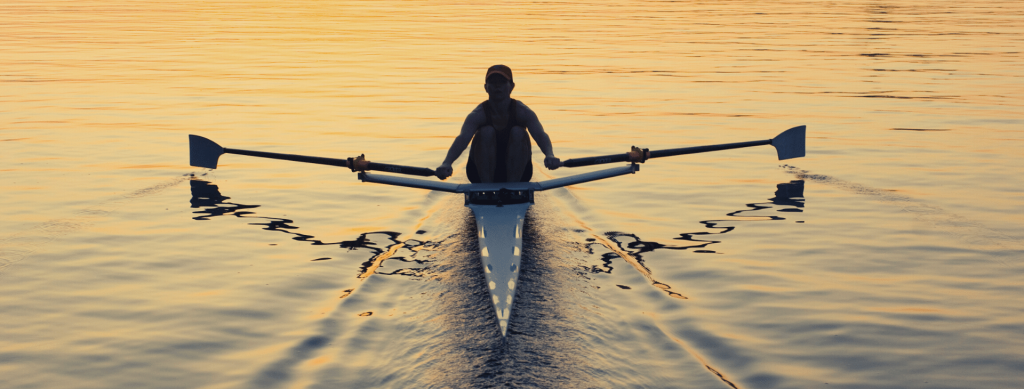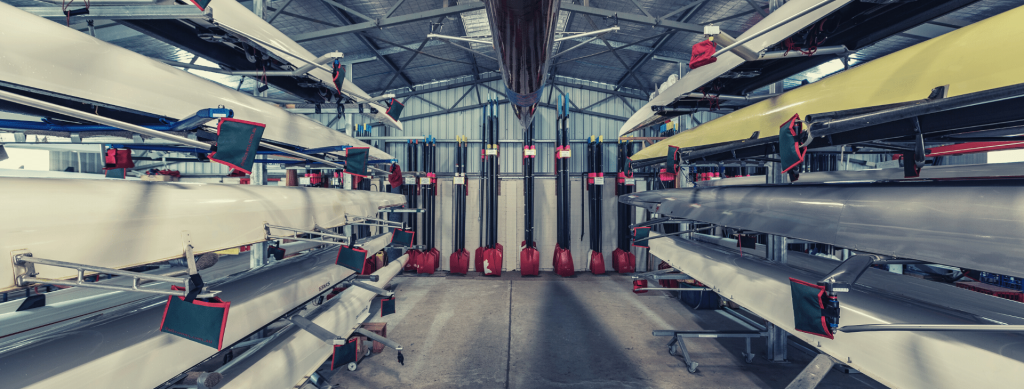Rowing Safety 101: Looking After Your Rowing Equipment
As with any sport or activity, rowing has its own set of hazards and dangers. For starters, rowing boats aren’t exactly the lightest of vessels, and being out on the water can still pose a risk for even the most experienced rower or swimmer.
Another hazard that comes with rowing is also towards your equipment. Unsafe or inexperienced handling can lead to damaged rowing equipment, as well as cause injury to ourselves or other team members. All of this can be costly to fix.
Whether you’ve been rowing for 30 plus years or have just started, it’s important to keep health and safety in mind at all times. Here’s a quick guide about equipment safety to refresh and inform you.

The number one rowing equipment safety tip
When athletes are carrying boats – no talking.
Apart from the coxswain or the person who is giving the commands, talking can confuse and distract others around you, especially since the bigger boats require more people to help.
We have all seen riggers hit racks and knock the pitch on the oarlock out of alignment. We’ve seen scratches put onto hulls from gate top nuts, or dents in the honeycomb from a boat being dropped from above.
It’s not ideal so don’t talk unless absolutely necessary. No talking – make it a rule.
Safety first and equipment care will take care of itself.
Rowing equipment in and around your boathouse
Firstly, rowing clubs should ensure that all equipment is in good working order and regularly maintained. This not only makes rowing more efficient (who wants to row with a broken oar sleeve or button?) but can help to prevent injuries due to damaged equipment.
Of course, regular maintenance doesn’t just extend to the equipment alone. Storage racks, oar brackets and the boathouse itself should be up to suitable standards. Don’t invest in expensive boats only to store them in a sub-par boathouse that floods!
With any storage solution, your boathouse should have ample space to fit your equipment, preferably with a clear, orderly layout of where everything is stored. It’s not required, but a protocol for moving your boating equipment in and out of the boathouse will make it much quicker to get out onto the water for some rowing fun.
Since many enthusiastic rowers rise before the sun, make sure there’s also lighting installed so that rowers can see during the unloading and packing up process of boats.

Travelling with Boats
There may be some instances when you have to take your rowing team and boats out for a field trip. In this case, it’s even more important to look after your equipment as the chances of damage may be higher.
Always use a trailer, container or roof bracket that’s meant specifically for boats, as your transportation storage method should be able to handle the weight and bulk of the boat. Dragon boats may need even more consideration due to their size – remember, the head and tail should come off before travelling!
Secure the boat with fastenings both across and diagonally across the width – this prevents the boat from sliding forwards and backwards, especially whilst braking.
Place a fluoro flag or strip of fabric on any overhang of the boat. Check your local road rules to determine the regulations around driving with oversized items. There will be a limit on the distance of overhand that is deemed roadworthy. British Rowing have a great guide in this PDF on page 14.


